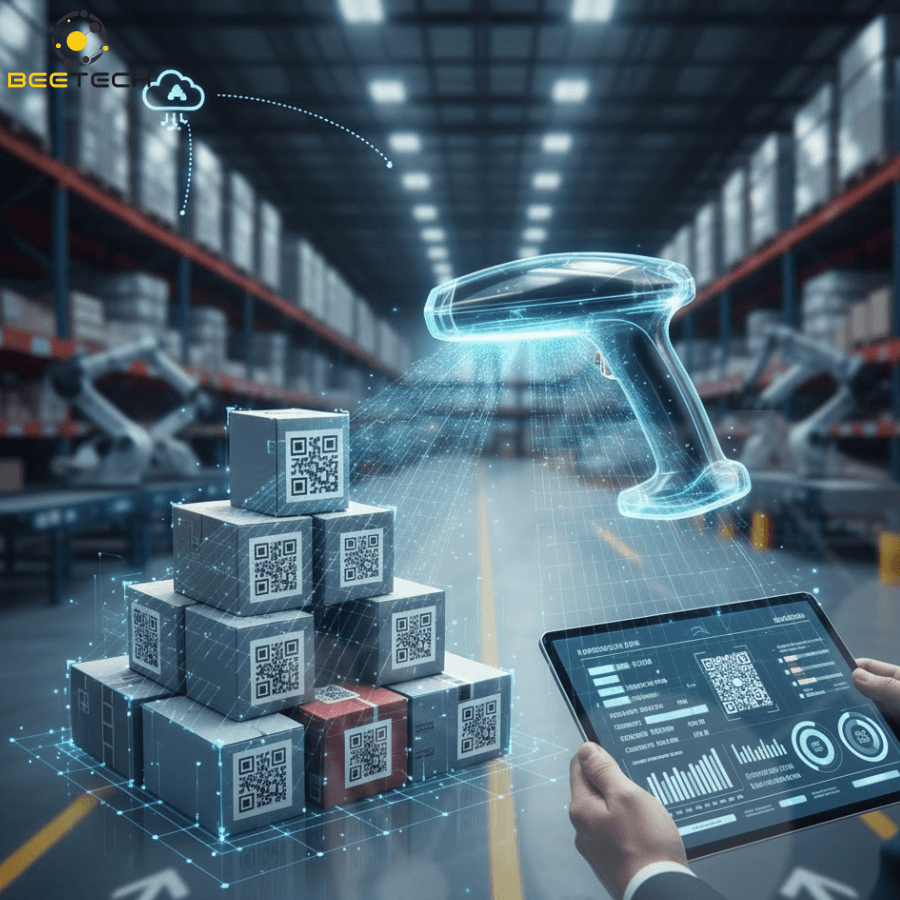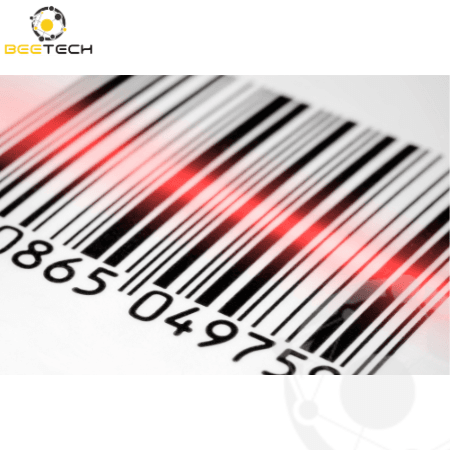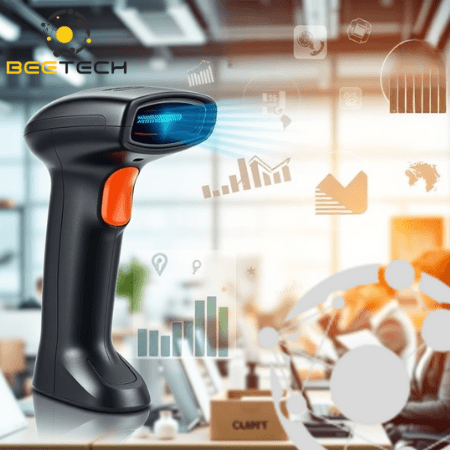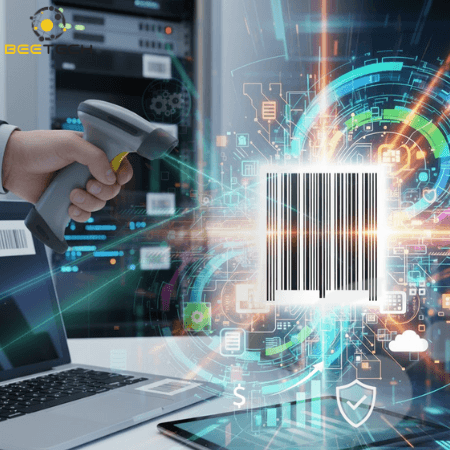80-82 Cao Duc Lan, District 2, HCMC, Vietnam
+84 76 865 6688
info@beetech.com.vn
+84 76 865 6688
About us
Contact us
80-82 Cao Duc Lan, District 2, HCMC, Vietnam
+84 76 865 6688
info@beetech.com.vn
+84 76 865 6688
About us
Contact us

Barcode Technology: The Classic Tool Evolving for a Digital Supply Chain Era
For more than half a century, barcodes have been a familiar symbol printed on almost every commercial product.
From supermarkets and factories to logistics centers, barcodes serve as the common language of global supply chains — simple, affordable, and efficient.
However, as the world enters the age of digital transformation and smart management, traditional barcode technology is at a major turning point.
Businesses — including Beetech — are witnessing the quiet yet powerful evolution of one of the most fundamental tools in the history of inventory and product management.

First scanned in a supermarket in 1974, the 1D barcode (EAN/UPC) quickly became the universal standard for retail.
Its advantages were clear: low cost, easy to print, easy to use, and fast. A simple scan could identify the product, retrieve its price, and update inventory instantly.
Yet at its core, the traditional barcode was merely an identifier — unable to store detailed information.
In an increasingly complex supply chain world — demanding traceability, quality control, and real-time data — this model began to show its limits.
“Barcode technology has served the 20th century well. But to remain relevant in today’s digital world, it must become smarter.”
— GS1 Global, the international barcode standards organization, stated in its report The Next Generation of Barcodes 2025.
A standard 1D barcode can only hold 12–13 numeric digits, corresponding to a single product identifier (GTIN).
This means that even if products come from different batches or manufacturing dates, they all share the same barcode.
Other key limitations make traditional barcodes less effective in modern operations:
Requires direct line-of-sight between scanner and code.
Performs poorly on dirty, curved, or scratched surfaces.
Cannot support real-time tracking.
Does not allow multi-layer traceability.
As industries such as logistics, retail, and manufacturing shift toward automation — powered by robots, WMS, and IoT — these limitations are increasingly seen as data bottlenecks.
To overcome these barriers, global standards body GS1 launched the Sunrise 2027 initiative, encouraging businesses to transition from 1D barcodes to 2D codes (QR Code, Data Matrix, and GS1 Digital Link).
Unlike traditional barcodes, 2D codes can store hundreds of characters, including:
Batch number, expiration date, and production date
Origin and logistics details
Web links (URLs) and product data
Unique identifiers for each individual item
This allows companies and consumers to trace product origins accurately and interact directly with items through mobile devices.
For example, scanning a milk bottle’s 2D code might display:
“Produced on Nov 2, 2025 – Dalat Farm – Batch #A245. Storage instructions and nutrition facts.”
Modern barcode technology is rapidly expanding into new industries:
Retail giants such as Tesco, Walmart, and Aeon are experimenting with dynamic QR codes to manage pricing, inventory, and promotions in real time.
Consumers can simply scan the code to view detailed product data, check provenance, or send feedback instantly.
In manufacturing environments, 2D barcodes are integrated into MES/WMS systems to enable end-to-end traceability — from raw materials to finished goods.
Each component can be individually tracked, something almost impossible with traditional 1D barcodes.
The pharmaceutical industry has adopted GS1 DataMatrix codes to combat counterfeiting and enable full traceability — from manufacturer to hospital — as required by WHO and EU standards.
This ensures transparency and patient safety across the medical supply chain.
Barcodes are evolving beyond simple “print and scan” tools — becoming an integral part of smart data ecosystems.
AI-based barcode scanning platforms (like Anyline BarcodeAI) can recognize codes that are blurred, curved, or partially obscured — tasks traditional laser scanners cannot handle.
This capability is invaluable in industrial and automated warehouse settings.
When linked with IoT sensors and ERP/WMS systems, barcode data can trigger automated actions — such as stock entry, shipment release, error alerts, or reordering.
Each scan becomes a data event within an intelligent operational network.
A new trend is emerging: workers or customers can scan barcodes using smartphones or AR glasses to see 3D interactive product data, creating an immersive and modern experience.
At Beetech, we believe upgrading from traditional barcodes to 2D or integrating with RFID is not just a technological step, but a data strategy.
Beetech offers a comprehensive end-to-end solution for barcode modernization:
Consultation & assessment of existing barcode systems
Design, printing, and deployment of 2D, QR, and GS1 Digital Link codes
Integration of barcode data with ERP, WMS, and RFID warehouse systems
Training and technology transfer for operations teams
This approach allows businesses to upgrade their data infrastructure without overhauling existing workflows — ensuring efficiency, stability, and cost-effectiveness.
By 2027, billions of products worldwide are expected to adopt next-generation 2D barcodes.
This shift represents not just a change in visual format, but a revolution in how data moves between manufacturers, retailers, and consumers.
In the near future, every barcode scan will not just identify a product — it will:
Capture real-time operational data
Trigger automated digital transactions
Deliver transparent information to users
Strengthen a globally connected digital supply chain
Barcode technology may be “old,” but it is far from obsolete.
On the contrary — it is evolving to meet the demands of the data-driven digital era, where visibility and traceability are everything.
With the rise of 2D codes, AI, and IoT integration, barcodes are being redefined — from simple identifiers into intelligent data platforms.
Beetech is proud to stand alongside enterprises in Vietnam and beyond on this journey — helping businesses transition from manual management to fully digitalized supply chain systems.
🟢 Beetech – Empowering Smart Management Through Barcode and RFID Technology.
📧 Email: info@beetech.com.vn
🌐 Website: https://beetech.com.vn




Barcode Technology in the Digital Age: Types, Advantages, Limitations, and How Businesses Can Choose the Right One
18/11/2025 04:12:49

5 Barcode Secrets That Smart Businesses in Vietnam Are Using to Boost Logistics Efficiency
12/11/2025 08:00:46

GS1 US adopts 2D barcodes and intelligent data capture – Advancing toward a transparent and modern supply chain
07/11/2025 06:33:27

Barcode Technology: The Classic Tool Evolving for a Digital Supply Chain Era
06/11/2025 03:37:29

Barcode – An efficient and cost-effective asset management solution for modern businesses
05/11/2025 04:20:46

The future of barcode scanning technology: Key trends and practical applications in the digital era
31/10/2025 04:21:05